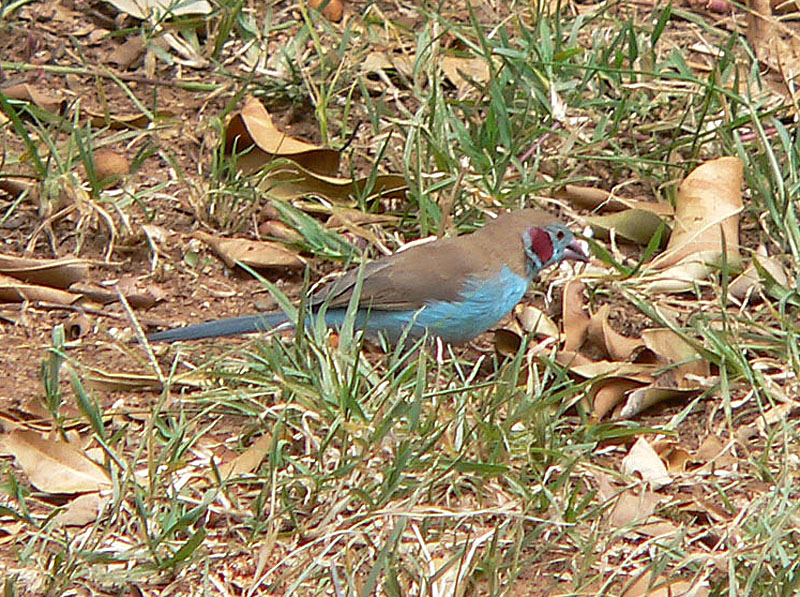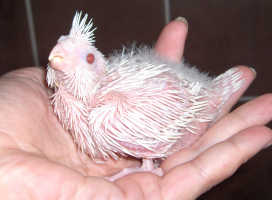Birds of all types are surprisingly skilled at reading human body language, and making the connection between their body parts and ours (i.e., identifying eyes, mouth, etc.). I’ve always been surprised by this, because we are such different beings than birds, and our facial features do not seem to line up well with theirs. Parrots, with their natural sociability and intelligence, are particularly skilled in this regard. Often this assists us in interacting with them, but it can also lead to unintended “misunderstandings”.
Recognizing Our Eyes
My first experience with the abilities of birds to read body language came while learning to hand feed cardinals, chickadees and other visitors to my bird feeder. Looking directly at these birds caused them to take flight immediately, even if I had not moved a muscle (please see my article Hand Feeding Wild Birds for more information on this enjoyable hobby).
Later, while working with birds at the Bronx Zoo, older keepers showed me how to get very close to birds in large exhibits by looking at them with a sideways glance. One could get quite close to many birds, especially while they were feeding, by seeming to “ignore” them…staring head on sent them into a panic.
A People-Feeding Owl
I’ve also found that some birds can recognize mouths as well. An imprinted, hand raised great horned owl under my care courted his favorite keepers by trying to stuff mice into their mouths – he never mistook an ear for a mouth when perched on one’s shoulder (I was apparently not an attractive prospect as a mate, and so was thankfully spared his nuptial gifts!).
Our Body Language
Many people use head and hand gesticulations when speaking, often without realizing just how dramatic those movements can be. My family, whose roots are largely in southern Italy, sometimes joked that my grandmother would be left unable to speak if her hands were tied together!
Parrots are very attuned to even small movements on our part. In some cases, our body language may affect out parrots in ways which we do not intend. Millions of years of evolution have left parrots with finely honed survival abilities. Even long term captives, remain instinctively attuned to signs of predators – wild hand or head movements may, therefore, frighten them. Depending upon the species and individual bird’s personality, a parrot may also react with aggression to movements that it perceives as threatening.
Some birds may react positively to our bobbing heads. There are no hard and fast rules…just bear in mind that your parrot is basing its reaction to you on what you do as well as say.
Mistaken Reinforcement
Reacting with laughter when a parrot does something that is “wrong but cute” will reinforce the bad behavior. Even if you follow up with a correction, the parrot has, in most cases, been given the reward it seeks – namely, being noticed. Even reacting with a sound when bitten can encourage the parrot to bite again.
If at all possible, get the parrot’s attention by making direct eye contact, put the bird down (if on you) or ignore it. Following desirable behavior with notice and praise, especially if such occurs right after bad behavior, will help keep your pet on the right track.
Further Reading
For further discussion of how human-parrot interactions can result in behavioral problems, please see my article Parrot Bonding as a Behavioral Problem.
 That Bird Blog – Bird Care and History for Pet Birds
That Bird Blog – Bird Care and History for Pet Birds

 Waxbills and their relatives are often the first finches aviculturists obtain after having gained experience with the hardier zebra or society finches. The black-headed munia and several others are well suited to this role – slightly more sensitive than Zebra Finches, yet robust enough to fare well when given proper care.
Waxbills and their relatives are often the first finches aviculturists obtain after having gained experience with the hardier zebra or society finches. The black-headed munia and several others are well suited to this role – slightly more sensitive than Zebra Finches, yet robust enough to fare well when given proper care. Waxbills, nuns and munias are best housed in large
Waxbills, nuns and munias are best housed in large  I first began reading the ASA’s wonderful journal, The Avicultural Bulletin, while working at the Bronx Zoo’s Ornithology Department. I found it to be of far more practical value than many zoo-based publications, and it remains so.
I first began reading the ASA’s wonderful journal, The Avicultural Bulletin, while working at the Bronx Zoo’s Ornithology Department. I found it to be of far more practical value than many zoo-based publications, and it remains so. I’m most impressed by the range of topics addressed by the thousands of posted articles. Parrots take center stage, and the diversity of species covered is truly exceptional, but finch and general interest (disease, training, legislation, conservation) articles are available as well. Recipe exchanges, an array of topic-specific chats and periodic special interest updates add to this amazing site’s value…stop by and see what I mean.
I’m most impressed by the range of topics addressed by the thousands of posted articles. Parrots take center stage, and the diversity of species covered is truly exceptional, but finch and general interest (disease, training, legislation, conservation) articles are available as well. Recipe exchanges, an array of topic-specific chats and periodic special interest updates add to this amazing site’s value…stop by and see what I mean. family Estrildidae. Focus on this one bird family has resulted in a body of information that is second to none. The posted care sheets, and the articles published in The Waxbill, are extremely well-written and informative.
family Estrildidae. Focus on this one bird family has resulted in a body of information that is second to none. The posted care sheets, and the articles published in The Waxbill, are extremely well-written and informative.
